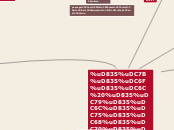RENAISSANCE
THEATRE
two different periods
Elizabethan times
there are some commons features like bloody scenes, long speeches and the revenge theme
Seneca is the most used model
the main theme is the dualism order-disorder
Jacobean era
the scene is dominated by
cruelty against all rule of classical decorum
cynism
disillusionement
tragedy
structure
final catastrophe of the hero
accepts the consequences of his actions and his final destination
High moral quality but commits a final mistake
person from a privileged social position
decline
crisis
developement
introduction
take inspiration by Aristotels poetic
achieve chatarsis
drama
masque
type of entertainment common at the Elizabethan court
interlude
interval between the acts of a tragedy
was inspired by medieval genres and classic models
two main events
the raise of Tudor Dynasty
in 1485 Henry Tudor defeated king Richard VI and was declared new king
he established the Tudor Dynasty that made England became a European political power and a centre of literacy culture
the printing press
introduced in England by William Caxton
England lives a "golden age" that led to a lot of discoveries
one of the most important was the copernican cosmology
under his influence there is a new vision of the world
the man is now at the centre of the world
HUMANISM
new spirit of adventure and new geographical discoveries
Thomas More (1480-1535)
wrote "Utopia" that means nowhere in Greek
talked about an island that couldn't exist and where everything is perfect, like a dream
the real world is a mirror of the supernatural
macrocosm
microcosm
radical change involving all cultural field
religion (gradual passage from the influence of Roman church yo the reformation influence)
art and architecture (the humanists get inspiration by the classical style)
science (the new discoveries led to a new interpretation of the world)
philosophy (from scholasticism to a new scientific philosophy)









